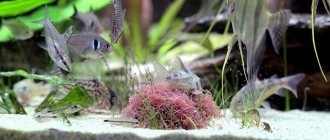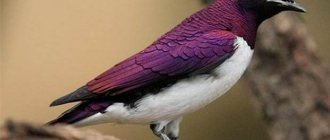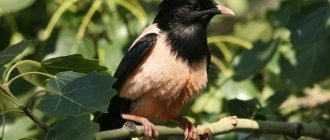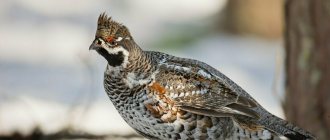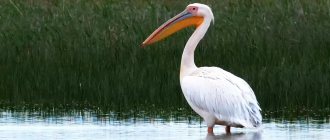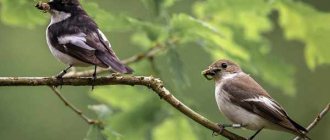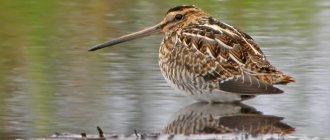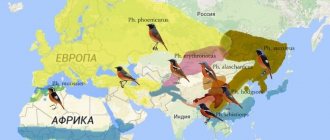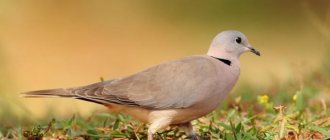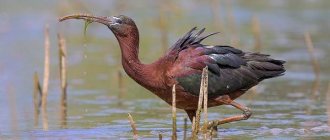Poultry farming » Quail
0
3084
Article rating
Kira Stoletova
The quail is a small bird from the pheasant family, the partridge subfamily and the order Galliformes. There are about a dozen species of these birds known in the world. Unfortunately, 2 of them are already extinct. Quails live throughout Europe, Asia and Africa. The most famous species is the common quail. It was domesticated about a hundred years ago and is now successfully bred on industrial farms and in households.
Quail
General information about quails
A common bird species, quails have always served as prey for hunters. In addition to the fact that various dishes were prepared from these birds, quails were kept in homes as songbirds. Another purpose of quails is to participate in quail fights.
In the order Galliformes, this is the only representative that, together with the silent quail, is classified as migratory.
Description and photo of quail birds indicate small size:
- the birds grow no more than 20 cm in length,
- The average weight of a quail varies from 80 to 145 g.
In addition, in the photo you can see other exceptional features in the appearance of quails:
- ocher shade of the main plumage,
- the head and dorsal region from above, as well as the area of the upper tail and the covert feather of the tail itself are distinguished by transverse stripes and spots,
- behind the eye area the feathers form a rufous stripe.
Among the distinctive features of birds are long wings and a short tail. In its appearance in the photo, the quail is similar to birds of the pheasant family.
This peculiar speckled plumage allows quails to easily hide in the natural environment from predators.
Males and females of the common quail differ from each other primarily in the color of the feathers on the throat. The female has black spots on the lower part and on the sides of the body, the throat area and chin are painted pale ocher. The cheek area of males is dark red, the crop area is of a similar shade, and the throat and chin are black.
How to choose
Buying quail meat today is not a problem. You can buy it at the market, in butcher shops, and in supermarkets. When purchasing quail meat, you need to adhere to some rules for choosing this product wisely:
- Give preference to those sellers whose sales area is kept clean and the carcasses are stored in the refrigerator (or freezer). Never buy quail at spontaneous markets: the meat there does not undergo sanitary and veterinary examination.
- Ask the seller to provide documents confirming the quality and safety of the product.
- If you buy a refrigerated product, be sure to evaluate its appearance and smell. The appearance of quail carcasses should be attractive, the surface of the skin should be dry, and when pressing on the carcass, the dent should quickly disappear. There should be no foreign, unpleasant, sour or putrid odor from the carcass.
- When purchasing a frozen carcass, carefully read the label and inspect the packaging. The label must contain information about the manufacturer, time of slaughter, and nutritional value. The packaging must be undamaged, and the meat in it must not be covered with an ice crust (this is evidence of re-freezing of the product).
The shelf life of chilled quail carcasses is 2-3 days, and frozen quail carcasses are 2-3 months. Fresh quail can be stored at a temperature from +2°C to +6°C, that is, in the refrigerator. Frozen quails should be stored at a temperature from -12°C to -18°C, that is, in the freezer compartment of the refrigerator.
Geographical area of residence and migration
The habitat of the common quail is European territory, the African continent and the Asian west. In Russia, the bird can be found in the eastern region up to the Baikal territory.
Quail representatives spend most of their time among thick grass, protecting them from the eyes of predators. Preferring to stay on the ground, the quail does not sit on tree branches.
Quails often do not fly away from countries with warm climates, since not every individual is able to overcome long distances due to not very developed flight abilities. They fly at a close distance from the ground, and very often flap their wings, quickly getting tired, which is why many of them, along the routes passing through the seas to their migration sites, die, falling exhausted into the water. During migratory movements, they often make temporary stops on sea shores.
The quail's habitat is flat fields and mountainous areas, meadows and forest edges and clearings, where a lot of plant food suitable for them grows. Open areas allow birds to live peacefully, out of danger, since predators live there with rare exceptions.
For wintering, quail representatives fly closer to the African zone and to southwest Asia, settling mainly in South African and Indo-Chinese territories.
The nesting places of the common species of quail can be recorded in the direction of Turkestan, in the Middle East; it lives in the Iranian regions. At the same time, these wild birds begin migrating to the southern habitats from the very beginning of April, and they return to the northern regions by the beginning of May, sometimes even in June.
Some interesting facts
Quails are the only birds that have been in space. Quail chicks are the first earthly creatures born during experimental flights in space conditions.
Quails as food sent down from above are mentioned both in the Judeo-Christian Old Testament and in the Muslim holy scripture - the Koran.
The ancient Egyptians used the image of a quail as a hieroglyph for the sounds “u” and “v”.
Quail eggs are widely used in the European perfume industry, being part of many expensive shampoos and creams.
Typical representatives
The common quail belongs to the partridge family, and was often hunted in the past:
- for the sake of tasty meat;
- to have a pet;
- caught for participation in quail fights.
The representative of the Galliformes order is small in size and inconspicuous in color. Today everyone knows that the eggs of these birds are very useful. Quails have a wide habitat: from Africa to European countries, they are found in the USA and Japan, in Russia they live up to Lake Baikal.
These small creatures live right on the ground: as soon as the spring grass rises, the females build nests. Quails raise their offspring on their own without needing the help of a male. When the fields ripen, they move there, closer to the grain. Therefore, modern species are susceptible to poisoning by pesticides used to treat seedlings.
What affects the size of quails
Manchurian breed
The most important factor determining the size of a small bird is its breed characteristics.
You can see the size and productive qualities of various breeds in the following table.
| Breed name | Body length in cm | Live weight of males in grams | Live weight of females in grams | Number of egg products per year | Mass of one egg in grams |
| Japanese quail | 15-21 | 115-120 | 138-150 | 280 | 9-14 |
| Pharaoh | No data | 200-270 | 300-316 | 200 | 12-16 |
| Texas white | No data | 360 | 470 | 220 | 12-18 |
| English white | No data | 135-160 | 155-180 | 280-290 | 10-11 |
| English black | No data | 160-170 | 180-200 | 280 | 11-12 |
| Tuxedo | No data | 150 | 160 | 280 | 10 |
| Estonian | No data | 170 | 200 | 278-310 | 11 |
| Manchurian | 18 | 200-260 | 260-300 | 220 | 16 |
| Californian | 23-25 | No data | No data | 100-110 | 11 |
Features of the view
Many people doubt whether quails can fly. In the wild, they do this quite well, migrating south in the fall and returning to their homeland in the spring. Domestic species do not need this, but on occasion they skillfully use their wings to overcome high fences.
Therefore, they are kept only in closed pens or cages. The recommended height of the pavilion for keeping decorative quails is at least 2 m, so that the pets feel comfortable. They have a rather timid character . Even a too bright color of clothing can cause them to panic. Then the quails begin to scream and try to fly, injuring their heads on the cage. For this reason, you should not keep other birds in the same room with them, much less put them in the same cage. It is very important to create comfortable conditions - if there is not enough light, they get nervous; if there is too much light, they can begin to behave inappropriately and start fights.
Hazardous properties
High-quality quail meat does not have any dangerous properties. Individual intolerance to it very rarely develops.
But under certain conditions it can become harmful. It's all about the conditions in which these birds are kept and raised. Unscrupulous producers can feed birds with antibiotics, growth hormones, and all kinds of feed additives that accelerate the growth of chicks and contribute to their weight gain. These substances can accumulate in meat and subsequently cause intoxication in people who eat it.
Conscientious quail producers feed their birds only approved feed, supplements, and vitamin and mineral complexes. Official enterprises for growing quails are under constant veterinary control, and the quality of their products is regularly checked for contamination with contaminants of various natures (radionuclides, salts of heavy metals, pesticides, pathogenic and opportunistic microorganisms).
To be sure of the quality and safety of the purchased quail, it is necessary to request from the seller documents that confirm the absence of substances or microbes harmful to the human body.
Quail hunting
The best time for her is at dawn. Fishing is done with nets that are laid out on the field. Males are lured out using special whistles, or a young female is placed in a cage. When the suitor comes close, the hunter rises, causing the frightened bird to fly straight into the net. Today, quail hunting is no longer such a common hobby, but before there were many other ways:
- they made traps, using grain as bait;
- hunted with guns;
- used birds of prey;
- caught with a net, bell, net;
- the easiest way is a snare.
Birds were hunted not only for food, but also to be kept in captivity, in cages. Connoisseurs valued their sonorous voice , although it would be a stretch to call the sounds made by quails singing. These are peculiar rhythmic sounds that in the wild can be heard several kilometers away.
What do birds eat in nature? Being a relative of the chicken, the quail obtains food in a similar way - raking the ground in search of sources of protein. These can be either worms or caterpillars, or seeds, leaves or shoots of green plants. In captivity, care must be taken to ensure a balanced diet, or quail will stop laying eggs. Fortunately, today there is a large selection of ready-made food, and it is not difficult to get fresh vegetation. The ready-made food mixture can be replaced by crushed wheat, vegetables (boiled), meat and bone meal, and sunflower.
Reproduction in nature
Quails do not create permanent alliances , so every season the males are forced to enter into confrontation in order to attract the attention of the ladies. Females may have one or several mates per season. The calling calls of birds mark the beginning of the mating season (from May to June, depending on the region). Nests are made directly on the ground, using grass and feathers as materials. There can be up to 2 dozen brownish spotted eggs. The female spends about 18 days in the nest. Since the male does not help her, she is forced to fatten up before this so as not to leave the clutch. The tiny chicks, having dried out, quickly get to their feet and almost immediately begin to feed on their own. After 1.5 months they become adults.
Nutrition
Quails react very strongly to poorly balanced nutrition, so special attention should be paid to the issue of feeding quails. Each age group has its own diet; in addition, birds are in great need of microelements and vitamins. The frequency of feeding also depends on age.
Quail
Quails are fed 8-10 times a day
The smallest chicks are fed according to the following scheme:
- 1 day – hard-boiled eggs, ground with shell;
- Day 2 – cottage cheese is added;
- Day 3 – young grass, nettle and dandelion are added.
At a week of age, raw protein and yogurt are added, and from a month of age, you can use ready-made feed for chicks, gradually adding millet to it. At 5-6 weeks you can introduce fresh vegetables and grated apples. Chicks up to one week should be fed 6-8 times a day. Further, the feeding frequency can be reduced to 2-3 times.
Adults
Feeding hens and males is somewhat different from each other. Protein is very important for laying hens and it should make up at least 30% of the bird’s daily diet. With a lack of protein, the number of eggs decreases. If there is too much white, many eggs will have two yolks, which prevents them from incubating. The diet should also include cereals, cottage cheese and fresh herbs or herbal flour.
The poultry diet should include up to 70% carbohydrates
It is very important for males to get plenty of carbohydrates. This is the main source of energy and should make up up to 60% of the diet. In winter, it is not possible to add fresh greens to the food, so carrots and cabbage should be added to the food. Experienced poultry farmers sprout millet and wheat in pots and add green sprouts to quail feed.
Fattening Basics
Fattening for meat lasts 3-4 weeks, with adult animals that have reached maturity beginning to be fed. Daylight hours for males are reduced to 8 hours. During the fattening period, the daily feed intake increases. There are special fattening rations that, in addition to protein and carbohydrates, contain yeast, cake and feed fat.
What does poor nutrition lead to?
Basically, malnutrition is expressed in a lack of vitamins and is expressed as follows:
- young animals develop poorly - lack of retinol;
- low blood clotting – lack of vitamins of group “K”;
- Skeletal deformation and rickets - not enough vitamin D.
Description of wild quails
Appearance
This is a small bird of the pheasant family, partridge subfamily, order Galliformes. The weight of a common quail varies from 80 to 145 grams, with a body size of up to 20 centimeters.
The quail's wings are long, relative to the body - up to 35 centimeters in span. But the tail is tiny. The eyes are brown, the beak is brown.
The common quail has short, widely spaced legs. This structure allows it to quickly move along the ground.
Features of color
Wild quail has a camouflage color of feathers, allowing it to blend into the background of the earth's surface. This makes the bird less noticeable to predators.
The plumage color of wild quail is represented by a variegated combination of brown and yellow flowers. There are inclusions of ocher shades and dark spots.
The parietal region of the common quail is darker than the other areas, with a slight brown tint. Along it there are usually several stripes painted with ocher.
The male's crop is a brighter, reddish hue. This feature is needed to attract the attention of females during the mating season. Wild quail lacks such decoration. The color of her feathers is lighter than that of males.
The upper body of both sexes is darker than the chest area.
Behavior and voice
The difference between common quail and other species is that they can fly. Although they don’t like to do this, preferring to move by running. Their flight abilities are used during migrations.
Wild and domestic quail
The quail is a small bird from the pheasant family, the partridge subfamily and the order Galliformes. There are about a dozen species of these birds known in the world. Unfortunately, 2 of them are already extinct. Quails live throughout Europe, Asia and Africa. The most famous species is the common quail. It was domesticated about a hundred years ago and is now successfully bred on industrial farms and in households.
- Common wild quail
- Way of life and reproduction of quails
- Keeping birds at home
- Feeding quails
- Breeding chicks
- Quail breeds
- Quail diseases
- Quail productivity
- Carcass cutting
- Quail cost
Quail varieties
Japanese or dumb
Quail is larger in size, the weight of some individuals reaches 250 grams. This species was domesticated by the Japanese in the 20th century. The birds are not susceptible to disease, have good egg production (about 300 eggs per year) and a high percentage of brood survival (85-95%).
Australian Black-breasted
As the name suggests, the chest of this quail is colored black. Loves high temperatures, about 25-28 degrees, and low humidity - 45-50%.
Harlequin
Males of this species have a contrasting pattern of white and black flowers on their heads. The craw, as well as the throat, is not the usual reddish hue characteristic of quails, but is painted with a white spot in the shape of an anchor.
Brown (swamp)
The main color of the feathers of this quail is brown, with black splashes. It chooses wetlands for habitat.
African blue
Males are distinguished by the color of their plumage in bright blue or sapphire colors. Quails of this species have a normal gray color.
Painted or Chinese
The smallest representatives of quails: weight from 45 to 70 grams, body size - no more than 14 cm. They are distinguished by their bright colors. The belly and large feathers on the wings are brown, the back is gray and blue, the beak is black, the legs are orange. These quails are bred mainly for beauty.
There were other types as well. At the moment they are considered completely extinct due to human intervention. This is a New Zealand and Canarian variety of quail.
Advantages and disadvantages of breeding
Quails are small birds that are easy to raise yourself. Advantages of quail breeding:
- A large number of individuals does not require a large room area;
- You can easily sell healthy eggs;
- A large-scale business pays for itself in six months, thanks to the high productivity of birds;
- Birds reach adulthood in 5-6 months.
Quail
Flaws:
- Quails develop quickly and after a while lose their high egg production;
- It is necessary to keep males and females separately;
- Rapid spread of the emerging disease among individuals.
Quail farming is gaining great popularity in Russia. Breeding quails is not difficult, it is important to adhere to the rules of keeping birds. The main task of the farmer is to choose the breed, prepare the cage and food for the birds. In the future, monitor the health and conditions in which the quail are kept. Birds are distinguished by their resilience and high productive ability.
0 0 votes
Article rating
Habitat
The common quail can be found throughout Europe, Africa, and western Asia. The only place where he cannot live is the polar latitudes.
The bird is migratory, travels to southern latitudes with the onset of April, and returns to its nesting sites in May. The wintering place of the common quail is the African continent, as well as the warm parts of western Asia.
There are sedentary quails, which originally lived in warm climate zones.
In Russia, the habitat of common quails is the plains of the middle part of the country, where they are warm enough and there is plenty of food.
For their life, they prefer grassy plains or mountain plateaus with tall grass. Grass and relatively flat terrain allow quail to hide and, if necessary, quickly escape from predators. In addition, the tall grass cover hides the laying of eggs well.
In the case of mountain plateaus, common quails rarely settle at altitudes above 2 thousand meters.
Lifestyle
The life of an ordinary wild quail is relatively short - about 6 years (you can find out about the life span of domestic individuals in the article “How long does a quail live”). Leads a daily lifestyle. At night, the birds gather in a small flock to avoid freezing, and hide in the grass or under stones and stumps.
When the slightest danger arises, common quails first freeze, almost completely merging with the surrounding vegetation. Then they quickly run away and hide, or, in extreme cases, take off. These birds are mainly attacked by foxes, ferrets, marmots, snakes, weasels, owls, and hawks.
As a diurnal bird, the quail seeks food during daylight hours. What a bird eats depends on its age. Young animals prefer to eat more insects. Older quails add plant seeds, leaves, young grass, and shoots to their diet.
Population and species status
Quails are birds that are of interest both for sport hunting and for hunting for meat. Hunting during the Soviet era, especially on an industrial scale, had the most significant impact on the number of quails. In the vast forest-steppes, these birds have disappeared almost completely. During this period, two species of representatives of the pheasant family were destroyed. Due to the fact that the species is characterized by high fertility, these birds managed to resist the onslaught of humans.
Breeding quails in captivity has played a very important role in preserving the number of such birds. In the last century, the Japanese domesticated Japanese quails by breeding them in poultry farms. As a result of the fact that no selection work was carried out on the birds, it was possible to preserve this species literally in its former form. The decline in the number of these birds is associated with a very important anthropogenic factor - the cultivation of agricultural land.
Breeding period
During the mating season, which begins in May, male quails begin to emit loud calling calls to attract females. Real battles often arise for the “lady’s” attention. The winner fertilizes the quail. Common quails do not create permanent pairs.
After mating, the female makes a hole in the ground, which she lines with dry grass and her feathers. Having built a nest, she sits down to lay eggs. One clutch can contain up to 20 white eggs with black specks.
When the clutch is finished, the quail sits down to hatch its offspring. After 17 days, the young appear. The chicks are covered with dense down, which prevents them from freezing. Color - red with dark stripes on the head, wings, and back. Weight at hatching: 5.5 grams.
Immediately after the last quail hatches and all the offspring dry out, they leave the nest with their mother. And learns to live independently. Common quail chicks grow quickly, becoming adults at 6 weeks.
Males of the common quail do not take any part in building the nest, incubating, raising and feeding the young generation.
Read about the characteristics of reproduction and egg production of quails in the article “When quails begin to lay eggs.”
Raising quail at home
A brooder is used to raise newborn chicks. A brooder is an ordinary box with a heating pad and a lamp, thanks to which a certain temperature is maintained. In the first week, the temperature should be 35 degrees Celsius. Over the next few weeks, this temperature should gradually drop to 30 degrees Celsius.
During the first week of life of chicks, lighting should be exclusively around the clock. Then it should alternate with one hour of light for 3 hours of darkness and one hour of darkness for 3 hours of light. This scheme works until the total daily illumination is equal to 12 hours. After several days of adaptation, the young animals are planted with the adults.
Hunting
Since wild quails are quite prolific birds, hunting them does not disturb the population size of the species.
Hunting common wild quail is not a difficult task, even novice hunters can do it.
It is recommended to go “on” before the birds fly away to the winter hut. At this time, a large number of wild quails gather in the grass on the banks of rivers. With the help of special noise effects, they force the flock to rise into the air, shooting at this time some of the individuals.
Many hunters go hunting for common quail with dogs. These helpers will find where he lives. They lift the caught bird, exposing it to the shot.
For hunting, either small-caliber weapons or small shot with a loose spread are used. Otherwise, when hit, you may end up not with a hunting trophy, but with minced meat. After all, these migratory birds are small in size.
Captivity
Involuntary features
Common wild quails get along well in captivity. The only thing is that no one keeps them until they are 5-6 years old. After 1-2 years of life, quails lay fewer eggs, and males fertilize them worse.
The quail begins to lay eggs 1.5 months after birth. Up to 300 eggs are produced per year from one hen. They are valued for their nutritional composition enriched with vitamins and microelements.
Breeding common quails at home began in ancient China. Then the trend moved to Japan, where the benefits of quail eggs and meat were discovered.
In addition to the edible properties of quail eggs and poultry meat, its manure is used as a nitrate-rich fertilizer. Some internal organs and bone cells of common quails have found use as a component of Asian medicine.
Common quails feed on what they eat in nature.
Optimal temperature conditions
As a heat-loving bird, quail loves temperatures from 18 to 25 degrees. At lower levels, it may die; at high levels, it will begin to lose its plumage.
The number of eggs produced and the weight of an ordinary quail depend on the comfortable temperature.
It is imperative to ensure ventilation of the room where wild quail live. This will help get rid of the ammonia that quail droppings produce.
Cell
To prevent birds from flying around the house in different directions, they are locked in cages. Housing for common quails can be purchased ready-made or constructed independently. The last option is discussed in the article “Building a quail cage with your own hands.”
Any type of cell must meet the following requirements:
- height - at least 20 centimeters;
- It is recommended to cover the top with a soft cloth - it will protect timid quails from injuries that they can receive when jumping during danger;
- The floor of the cage is made with a slight slope at one angle, where the eggs roll away as a result.
The size of the cage depends on the number of birds. It is calculated according to the principle: for every 10 quails - 0.2 square meters. For ordinary quails raised for meat, the cage is made a little larger.
Lighting
The activity of common quails is related to the length of daylight hours. For them it is necessary to organize a regime of light and darkness.
Wild quail sleep about 4 hours a day. But it is not advisable to do a night regime for this period, since the birds will wake up hungry and eat more food than normal. This may cause the goiter to stop working. It is better to divide the night cycle into parts of 2 hours with the same break between them.
There is no need to illuminate common quails with strong streams of light. For a cell with an area of 40 by 100 centimeters, one 40 W light bulb is enough.
Preparing the necessary conditions for breeding
The process of breeding quail at home begins not with the purchase of young animals, but with the acquisition of a cage and other necessary equipment, as well as the allocation of the necessary premises.
To raise poultry, the primary purchases are:
Certain and quite high requirements are always placed on the cell. It should be metal, with a low ceiling, the height of which should not exceed 25 cm; even domestic quails can fly and can injure themselves if they hit the ceiling. To prevent such problems, it is recommended to cover the ceiling with some soft fabric. To determine the size of the cell, you need to take into account that one adult individual needs to be allocated 10 - 12 square centimeters.
On average, one square meter of floor can accommodate 80 - 100 birds. A tray for collecting litter and a tray for collecting eggs must be installed at the bottom. Particular attention should be paid to drinkers and feeders; it is better to place them on opposite sides of the cage. It is better not to skimp on cages and not to buy used ones, since it will not be possible to get rid of all microbes, even after the most thorough treatment of the cage with detergents.
The room where the cages will be located must be dry, properly ventilated, but without drafts. It is necessary to maintain optimal daylight hours, which for these birds is 17 hours. If you increase the daylight hours, the egg production will first increase, and then the bird will simply exhaust itself, which will reduce its lifespan by 2 times.
An incubator is useful for hatching and breeding chicks, because domesticated quails have lost the ability to hatch eggs on their own. The incubator can be absolutely anything, even homemade, the main thing is that it has the function of maintaining the temperature at 37-39 degrees Celsius. The only advantage of automatic incubators is the automatic rotation of the eggs after a given period of time, but these actions can also be carried out manually.
Diseases
general information
Like any bird, a quail can get sick. The reasons for the development of pathologies are often non-compliance with the requirements for keeping poultry, poor-quality or missing feed, and unsanitary conditions.
Quail diseases, methods of getting rid of them and preventive measures are well described in the article “Symptoms and treatment of quail diseases.” Let's look at common ailments.
Salmonellosis
An infectious disease that occurs when there is poor ventilation of the room and large crowding of quails in one cage. It happens that the disease occurs due to poor quality food.
Symptoms: liquid droppings blocking intestinal patency.
There is no treatment. Only destruction of the population with mandatory disinfection of the cell with a 3% chloramine solution or 2.4% sodium hydroxide solution. Calculation: liter of solution per square meter of area.
Prevention: frequent cleaning, fresh water in drinking bowls, high-quality ventilation, fresh high-quality food, correct calculation of the cage area for the number of quails.
Colicbacteriosis
Infectious disease of epidemiological type. The causative agent of the disease can be in water, feed, sand.
Symptoms: the bird is lethargic, sleepy, and often falls on its feet.
Treatment: antibiotics (“Enronit”, “Lexofron”), acidophilic yogurt.
Prevention: vaccination, keeping cages clean.
Pullorosis
The infection mainly affects young animals.
Symptoms: inactivity, chicks sit on their feet. When tremors begin, they try to cluster in the corners of the cage. Dried droppings are observed in the anal area, blocking the exit of feces.
Treatment: destruction of the population, disinfection of the cell.
Prevention: prevent chickens from hypothermia, clean the cage regularly.
Aspergillosis
A disease that can affect quails at any age.
Symptoms: in adult quails the disease occurs in a latent form. Young animals experience general lethargy, blue beaks and paws, and increased thirst.
Treatment: antibiotics, vitamins, antifungal drugs (“Amphotericin”, “Itraconazole”).
Prevention: fresh food, water, disinfection and cleaning of cages.
Newcastle disease (pseudoplague)
The disease mainly affects young animals. It develops quickly, the death of diseased quails occurs in 2-15 days. The cause of infection is sick birds, contaminated eggs, or food.
Symptoms: There are two forms of the disease. In one there is a rise in temperature, paresis, paralysis, weakness, and bloody diarrhea. The other form does not show itself in any way.
Treatment: only population replacement with cell disinfection.
Prevention: keep the new bird in quarantine for two weeks. Boil eggs well for feeding quails. Feed them only high-quality food.
Application in medicine
The versatility of the positive effect of quail meat on different organs and systems of the body allows it to be introduced without any restrictions into the diet of every person, from infants to the elderly. It is very useful to include it in the diet (at least once a week) for certain physiological conditions:
- during pregnancy;
- while breastfeeding;
- children;
- elderly and elderly people.
Doctors value quail meat and recommend its use for various diseases and pathologies:
- cardiovascular system (arrhythmias, coronary heart disease, atherosclerosis, arterial hypertension, microangiopathies);
- organs of the digestive system (gastritis, peptic ulcers, colitis, pathologies of the liver and pancreas);
- respiratory system (bronchitis, pharyngitis, pneumonia, bronchial asthma);
- metabolic disorders (diabetes mellitus, gout, thyroid pathologies);
- exhaustion;
- anemia;
- hypovitaminosis;
- mineral deficiency;
- male sexual weakness;
- stress, nervous tension;
- after serious illnesses;
- in the postoperative period;
- for the prevention and treatment of rickets and osteoporosis.
It is recommended that cancer patients consume dishes made from quail, as they help restore the body’s strength and have some anti-cancer effect.
